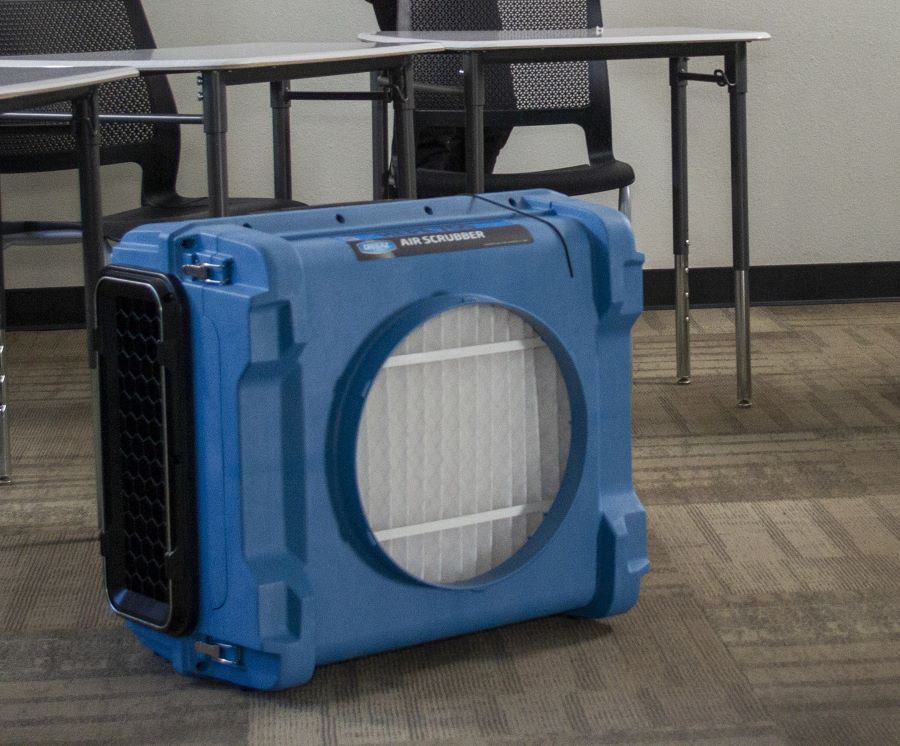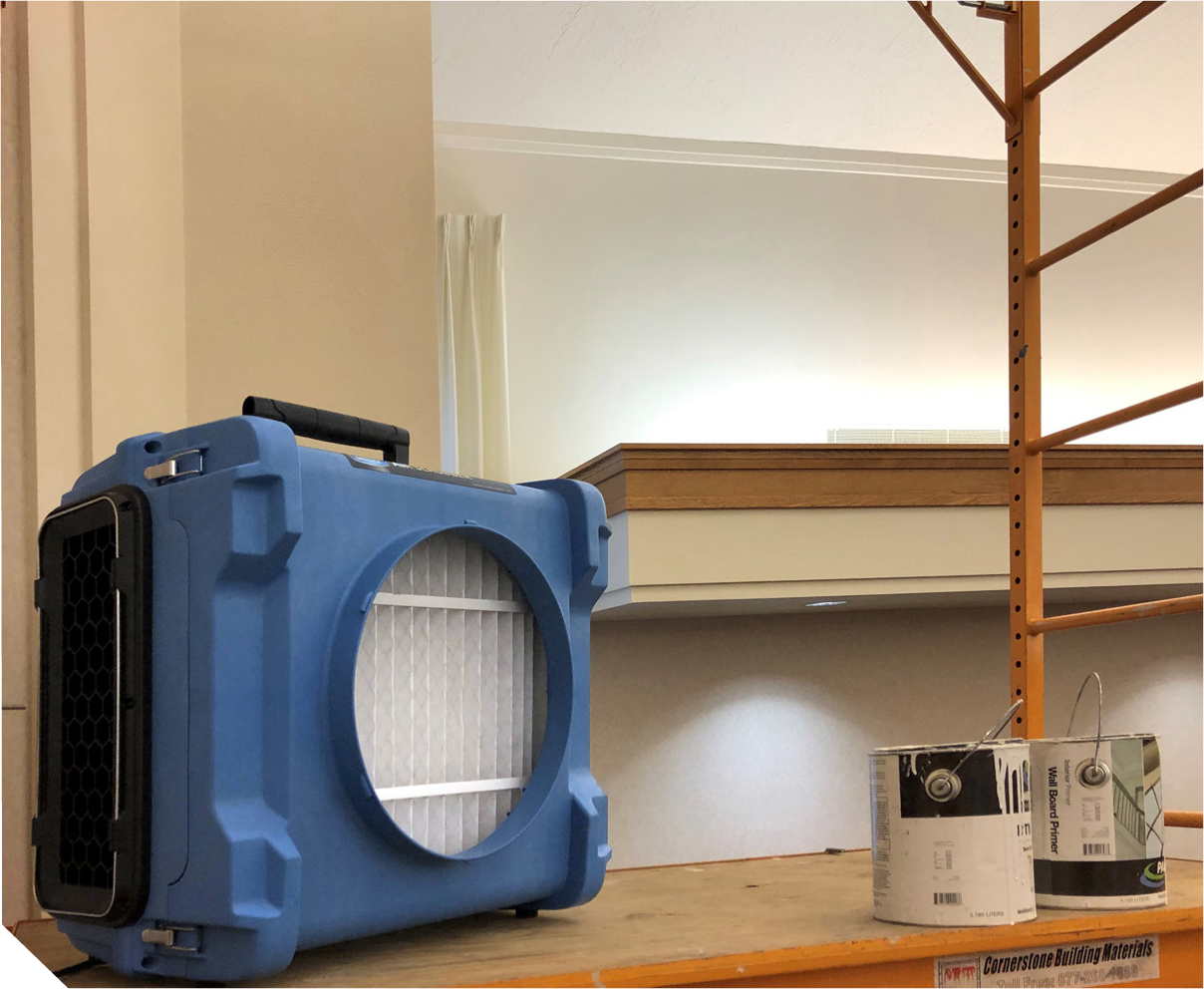Improving IAQ for FM: Key Facts and How to Mitigate Risks

Good indoor air quality (IAQ) reduces health risks for building occupants, minimizes liability and keeps HVAC systems free from build-up and functioning optimally. This guide covers key facts about indoor pollutants, risks associated with water damage, and air filtration strategies.
FACILITY GUIDES
IMPROVING IAQ FOR FM: KEY FACTS AND HOW TO MITIGATE RISKS
Handling air filtration requests, allergy concerns, water damage cleanup, and construction projects are everyday tasks for FMs. Given that every facilities maintenance activity typically involves at least one of these conditions, controlling indoor air contamination by harmful particulates is an essential part of the job.
Maintaining indoor air quality (IAQ) reduces risks for building occupants and invests in their long-term health and productivity. It also minimizes liability and keeps HVAC systems and other critical equipment free from buildup, ensuring optimal performance.
IAQ Facts
Even in non-smoking environments with “clean” air, microscopic particles, allergens, and organic chemicals can cause issues, especially for sensitive occupants.
- Most of these materials are the result of normal human activity or come from plants, insects, cleaning agents, and personal hygiene products. Plant-borne mold spores can also enter the indoor environment through open windows and doors, and with foot traffic.
- Additionally, a normal indoor environment includes trace quantities of volatile organic compounds (VOCs) – the result of off-gassing from carpeting, furniture, and use of chemical products. Although most of these particles aren’t harmful to everyone, they may affect more allergen-sensitive building occupants.
Indoor pollutants are different – and have the potential to cause adverse health effects.
- According to the U.S. Environmental Protection Agency (EPA), both particulate and gaseous pollutants can cause short-term and/or long-term health effects.
- Particulate pollutants include solid or liquid particles that are light enough to float in the air – and small enough to penetrate deep into the lungs. Scientific research has found a clear association between breathing PM2.5 or smaller smoke particles and heart and lung health effects. Larger particulate pollutants – such as pollen, animal dander, and dust – don’t enter the lungs as deeply, but can aggravate those with asthma and allergies.
- Hundreds of different gaseous chemical pollutants in indoor air come from combustion appliances, building materials, paints, adhesives, dyes, deodorizers, pesticides and more. Health effects depend on the type and concentration of pollutants, frequency and duration of exposure, and individual sensitivity.

Flood-related water and excess humidity bring the added threat of mold growth, as well as more harmful pollutants that impact IAQ.
- Moisture inherently brings the threat of mold, which can be extremely harmful to building occupants – particularly those who are young, elderly, or immuno-compromised.
- Mold begins to grow when moisture remains for 48 hours or more – and inhaling it can cause a range of adverse health effects and allergic reactions. Because mold spreads by producing spores that travel through the air, filtering out these airborne particles before they settle is crucial.
- The EPA warns against other dangerous substances that become airborne after flooding, including bacteria, lead, and asbestos. These other hazards include pathogens from sewage and dirty water, dust and debris kicked up during flooding, and chemical vapors from textiles and damaged materials.
Mitigating Risk
The easiest and most important way to mitigate IAQ risk is through proper air filtration. Because IAQ can fluctuate as events occur and vary by location, the most efficient route to improving IAQ is with portable air scrubbers.
What is an air scrubber?
An air scrubber is a portable filtration system that draws air from the surrounding environment and passes it through a series of filters. Each filter stage operates with increasing efficiency, with a net effect of producing the cleanest air possible at the highest rate of airflow through the system.
Choosing the right equipment
The type of air scrubber and filters necessary to handle a particular project can vary, but there are a few basic guidelines for selecting the best one:
- For smoke, viruses, mold, and operation in critical or sensitive areas, an air scrubber with 99.99% efficiency – exceeding High Efficiency Particulate Air (HEPA) standards – is necessary.
- Clearing odors and fumes requires activated carbon pellets, not just a layer of carbon or carbon-infused filter.
- For clean water damage and construction projects, at least 99.97% efficiency with a HEPA filter system is recommended – preferably a unit with easily accessible pre-filters, as they will need to be changed frequently to ensure optimal performance.
Other air scrubber features to consider are: UVC protection against viruses and bacteria, higher clean air delivery rate (CADR), antimicrobial housings, portability, ease of ducting if needed, and noise level.
Conclusion
In addition to minimizing the risk of mold growth, air filtration works to significantly reduce exposure to a range of harmful airborne contaminants and pollutants that can be stirred up during everyday projects, water damage, and construction work. Using effective, portable air scrubbers protects the health and safety of occupants, mitigates risk, and keeps contents and equipment in optimal condition.
For more information:
Tim Poskin, Vice President of Programs Ready 2 Respond
ready2respond@r2rprogram.com 888-208-5401


